Story by Chris Hector & Photos by Roz Neave
When it comes to showjumping style, George H Morris literally wrote the book. In this exclusive interview with THM, George examines a number of action photographs from the CHIO Aachen showjumping, illuminating!
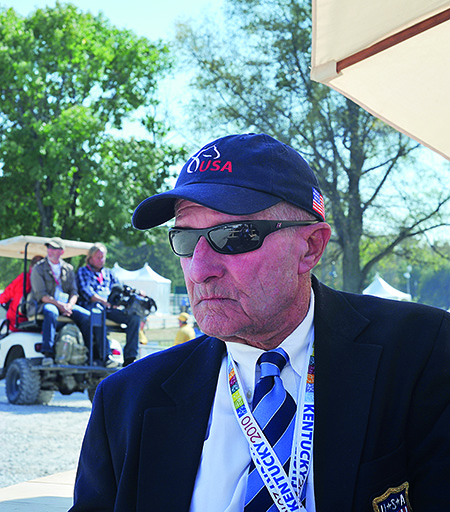
Over to George for his words of wisdom and with this sequence is from one of his more famous students, Chris Kappler riding the Westfalien gelding, Primeur.
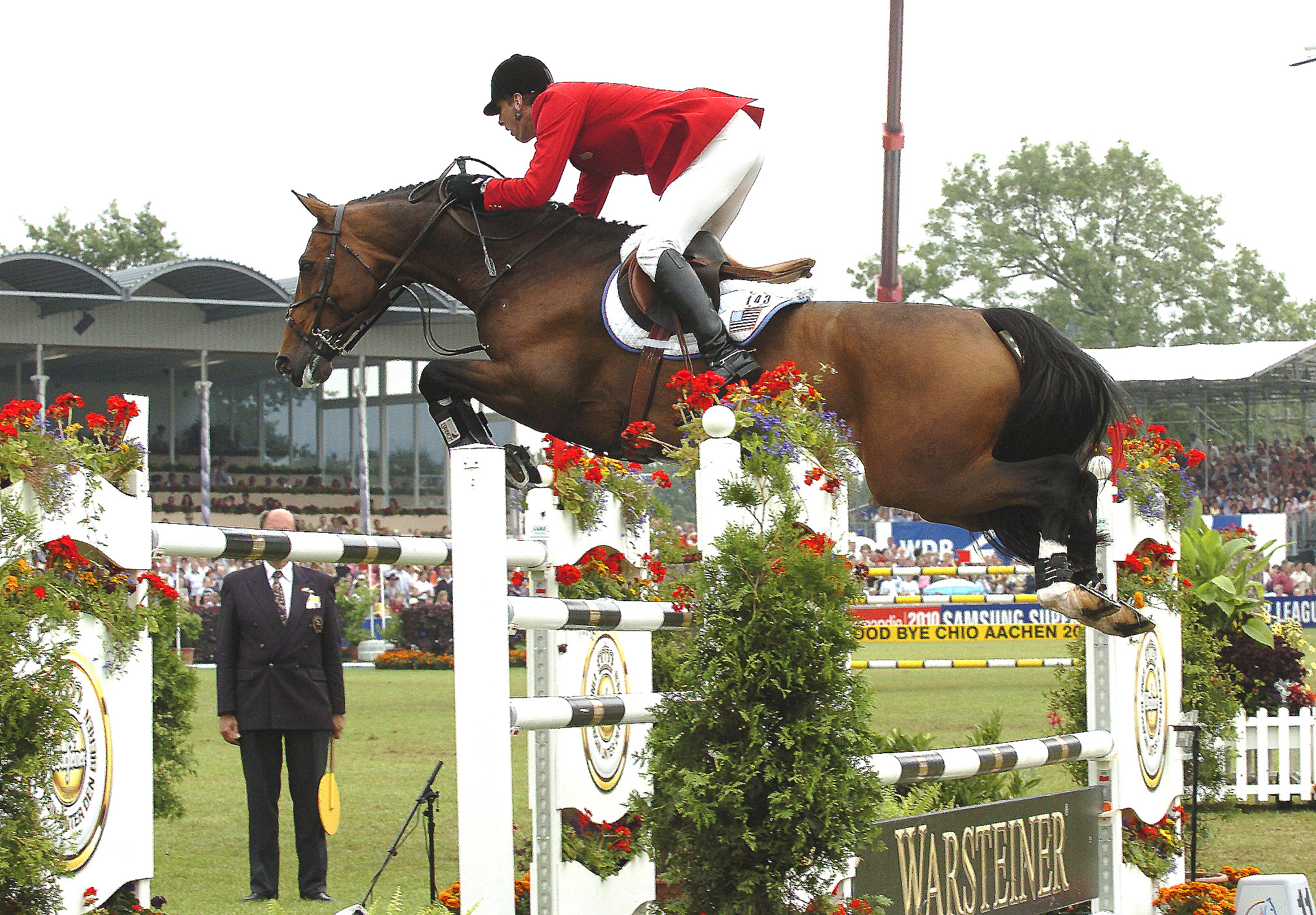
This first picture is Chris Kappler. Addressing the style of the rider, he is standing on his toes and his heel is way up and he is jumping way ahead of his horse. This is very common with showjumping riders over big fences, in helping – or thinking they are helping the horse across wide oxers. I say it is a poetic license of very good riders, most of them do this to some extent. It is not correct. It is not something you want to encourage but it happens. As his heel comes up, his knee comes up and his buttocks are out of the saddle – that’s called jumping ahead, or jumping before the horse. His posture is quite good, he is looking ahead, his back is straight and flat.This is the typical American crest release. The rider places his hands on the crest of the neck. In our country we teach that in elementary jumping, that is also very good for the hunter judges who want to see rather a loose horse. This again is not a text book position of the hands where you should see a straight line from the elbow to the mouth throughout the jump, but this is not a fault, this crest release, because it is giving the horse sufficient freedom and it gives the rider’s upper body support. It’s not a fault but I would say there is a more advanced technique than that.
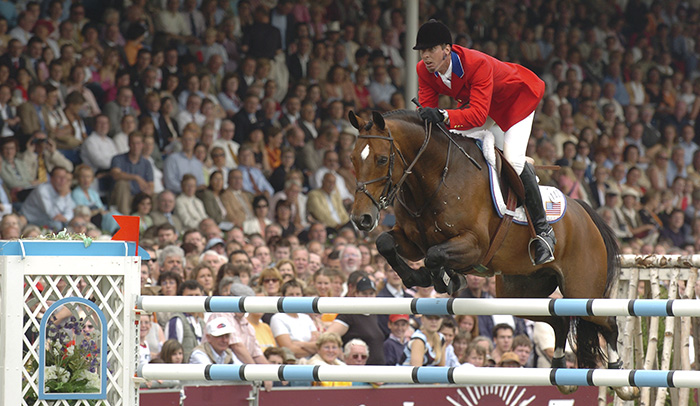
This is a second picture of Chris, he has quite a habit now especially with his left leg – I’m his trainer, I don’t bug him about it because he is past that stage of being a pupil, but he should attend to his left leg, his heel has come up and he stands on his toe and that affects his security in the saddle because the security comes from having your heels down. As I say, over big fences, most of them do that, 98% of them jump out of their leg like that. Here you see his seat is too far out of the saddle, it’s too high. Again, very good posture, very good use of the eyes, his eyes are up and ahead looking toward his next fence. This is a close up version of the crest release, you see where he has placed his hands on the crest of the neck rather than six inches lower which would be more text book – alongside the horse’s neck.
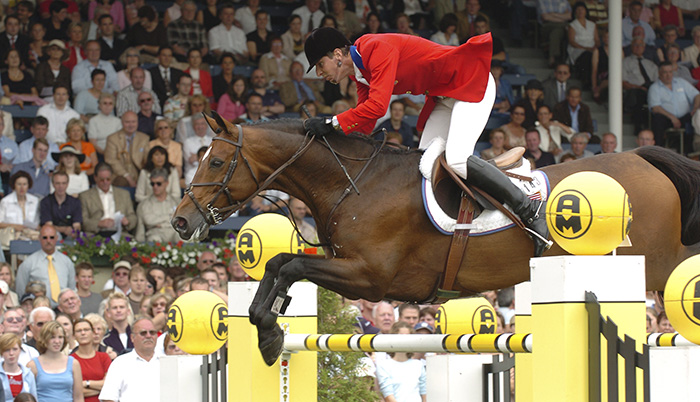
This is a very big oxer, the horse was flat, reaching, but this accentuates Chris’s faults. I hate picking on Chris – but if you take a line through the flank to the point of the stifle, he literally jumped out of the saddle, but that happens.
Here again the crest release. In most of the pictures the horse is very fancy. He is a very fancy Thoroughbred type German horse, his expression is great, his jumping style is great, he’s quite a good horse – he is not Royal Kaliber but he was a good second horse. Unfortunately now, he is his first horse.
From the United States to Germany, but to one of the most stylish of the Germans, Christian Alhmann riding the European champion, Coster.
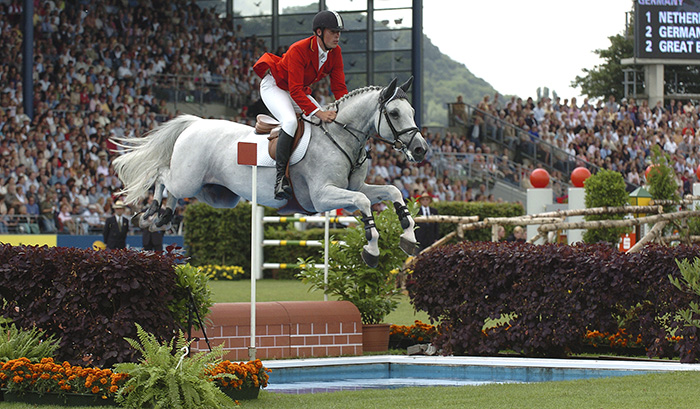
Christian Ahlmann is a super German rider, he has a very stylish position, a very stylish build on a horse. This over-the-water picture in Aachen is textbook. You see his heel is down, his ankle is flexed, his toes are out a little bit – this gives him the correct grip with his legs. You see his seat is slightly out of the saddle, his crutch however is close to the saddle, his back is very flat. Ideally his upper body could be a little more, as we say, ‘closed’ – more parallel to the horse, he is very slightly open in the air. Eyes are up.
This is a very good example of the release versus the crest release, this is what we call the automatic release. Here you have a straight line, elbow to the horse’s mouth and the hands are alongside the neck. This is an infinitely better picture of what we call, ‘form over fences’ and it is over an interesting fence, the water jump.
The horse is very attentive, it is a spectacular horse, very good behind, and he is giving the water quite a bit of height which always ensures you get across the tape. This is a textbook display; this is probably as good a picture as we are going to get in this grouping of pictures.
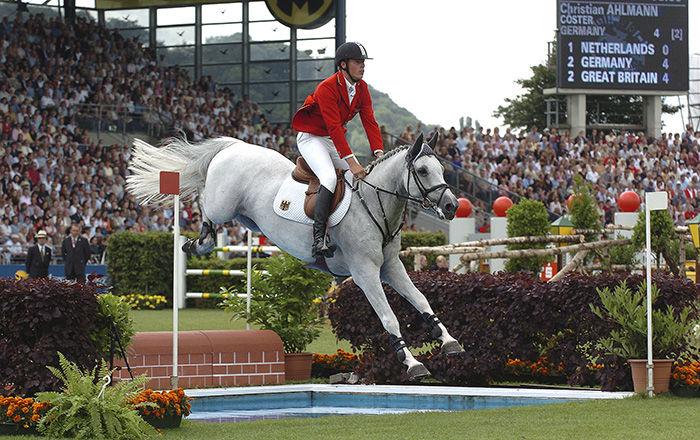
The second picture is a little later with the same water, and the only difference, his heels are down but you can see, he is slightly cocking his toe in anticipation of landing. He is putting his legs a little forward, this braces, it helps his security, with his balance braced against the impact of landing. That is a very good position of leg, especially on landing. He is dropping back into the saddle and his hip angle is opening up, his body is straightening up, he is still looking up and ahead. This is another textbook picture of landing.
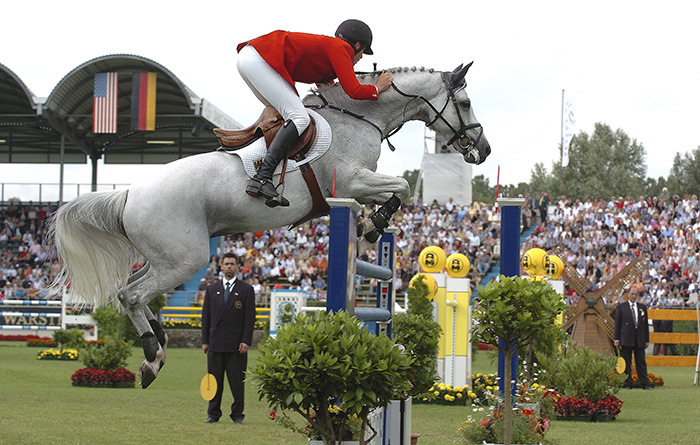
In this third picture, Christian is very similar to Chris, this is what most of us do over big fences, we don’t want to do it, but we do it in ‘helping’ the horse. You see his heels are up and he is standing on his toe, his feet have slipped back and his buttocks are very far out of the saddle – jumping ahead of the horse again. He is looking in the direction of movement; this is more of a crest release again.
Wonderful horse, he is an athlete and a stylist and I am a great admirer of Christian Ahlmann. The horse is very spectacular behind, very careful and very dramatic behind.
In this exercise of compare and contrast, we go from the elegantly effective to the… well let George explain:
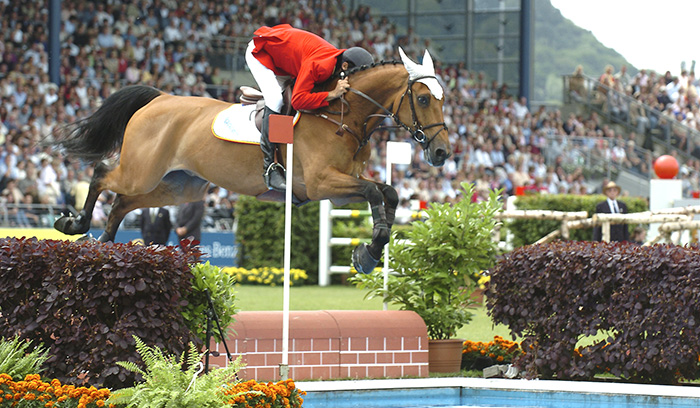
Unfortunately for the rider – who I think I know – this photo covers all the faults. This is a demonstration of very poor form over fences.
I always start with the lowest point of the rider, which is his leg and foot. You see his stirrup has slipped back, the stirrup is ‘home’, his toes are down, his heels are up, his leg has jutted forward. This is the old fashioned English hunting leg that is rather extinct today, thank goodness, because this is not only very ugly, it is very ineffective. It doesn’t do much good for anybody. This is the kind of leg that you don’t want.
Working up, his buttocks have come very far out of the saddle – that’s most incorrect. The buttocks should be out of the saddle but just slightly. He’s got a very roached back – this is a textbook picture of what not to do. He is what we call ‘ducking’, he’s throwing his body over to the side of the horse’s neck. That’s a very ugly position and it also throws the horse off balance. It’s not only very unattractive in style, but in practice it is detrimental to the horse.
This release I can’t criticize too much. It’s alongside the neck. You can’t have a straight line to the mouth because of his upper body, but his idea is right in the position of his hands.
You can see this is a very good jumping horse, but the horse is perhaps a little sour, a little nappy, a little sulky, but the acrobatics of the rider on top of the horse is reflected in the horse, you see it in his body language. First his ears are back, second, his eye is very disturbed, and third, his tail is swishing. So the horse reflects the rider’s busy-ness and lack of stillness.
George Morris for all he shaped the American style, has always been a supremely civilised citizen of the world – and one part of the world that he particularly enjoys is France. Here is one of the more elegant of the French jumping team, Eugénie Angot riding the Jalisco daughter, Cigale du Tallis.
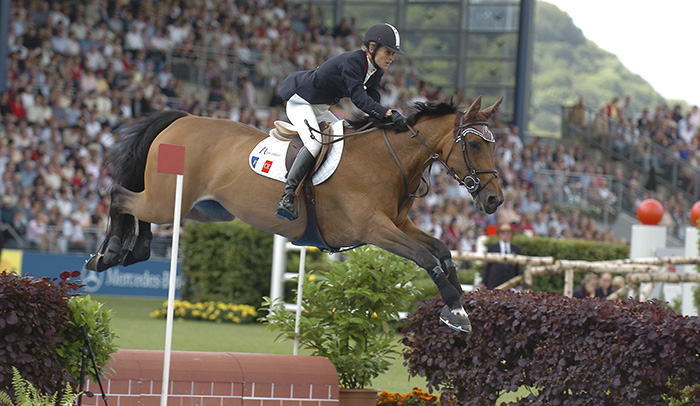
I appreciate her style, this is a very good example of the beautiful French style. Her heel is down, her ankle is flexed, her toes are out for this big water at Aachen. She hasn’t lost her leg position, her buttock is just slightly out of the saddle, crotch close to the saddle – not dropping back, not jumping ahead. The posture is impeccable, beautiful straight back, eyes up and ahead. This is a crest release, I would like her release a little lower alongside the neck to get a perfectly straight line, but you can’t criticize that hand position – like Christian over the water, this is an example of very good form over a fence. Her horse is very generous, the horse is looking well through the bridle, very attentive and giving the water jump, plenty of loft. Nice horse.
And now to a rider from a country not normally associated with showjumping – Saudi Arabia – but a rider who has paid his dues with the great Nelson Pessoa, and who is competitive anywhere in the world: Khaled Al Eid and the Selle Français gelding, Al Riyard.
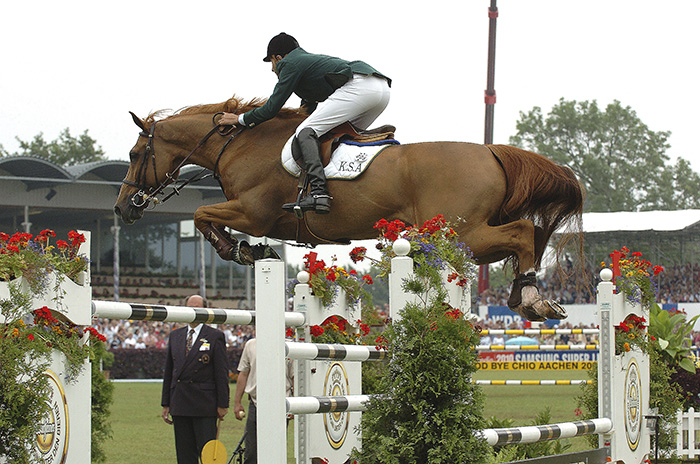
This is not bad, this is quite good, I’d like his heels further down but he still has a better leg position than for instance, Chris. I’d just like more weight in his heel but the rest of his leg is in a very good position. His base of support is exemplary; it is out of the saddle but not too far out of the saddle. His back is flat; good posture, looking up ahead where he is going. This is a very good crest release too. It would have to be four inches lower to have the straight line, elbow to mouth to be an automatic release. The horse is jumping well, the horse is very tight with his legs, he’s a tidy jumper. When a horse is that tidy and tight, you question his scope…
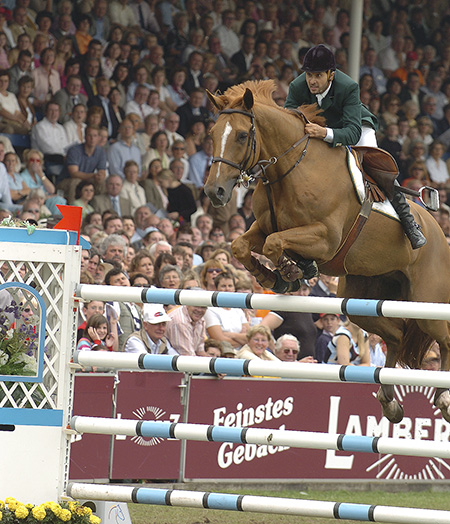
Here unfortunately he has lost his stirrup. Losing the stirrup often has to do with weight, the weight in the stirrup is the weight in the heel, that pushes the heel down, and at the same time properly weights the stirrup so you don’t lose it. This might have been a fluke or it might be a position-born problem that he has to work on. He has a nice crest release; he looks to have a very soft hand, soft arm, looking straight ahead. A very soft rider, and the horse here is very correct and tight in front, showing very good style in front.
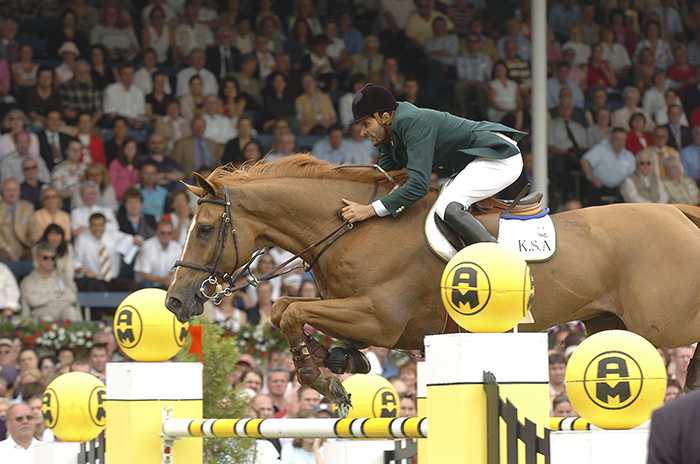
His leg is hidden by the wing, but the base of support – that includes his thighs and seat – is exemplary. He is just out of the saddle, not dropping back in the saddle – this is as good as we have seen in the seat department. His back is adequate, his back is flat, he is looking straight ahead. What is exemplary is his release, this is the automatic release, the textbook release. We used to call it ‘jumping out of hand’ but now we call it the automatic release. There is a perfectly straight line, elbow to the horse’s mouth. You can take many many pictures but you will very rarely see this release today, it is not taught, it is not practised but it is very good because it improves your balance, improves your control – it gives you total control over the horse in the air. This is something that is sadly neglected by jumping teachers and it is gradually becoming extinct. It will be a pity to lose this technique of jumping out of hand – once everybody did it, but it is not as fashionable today.
Breeding Showjumping Champions? There’s a range of top European stallions available from International Horse Breeders. Like Balou du Rouet, find out more: http://ihb.com.au/product/balou-du-rouet/
Plus many more
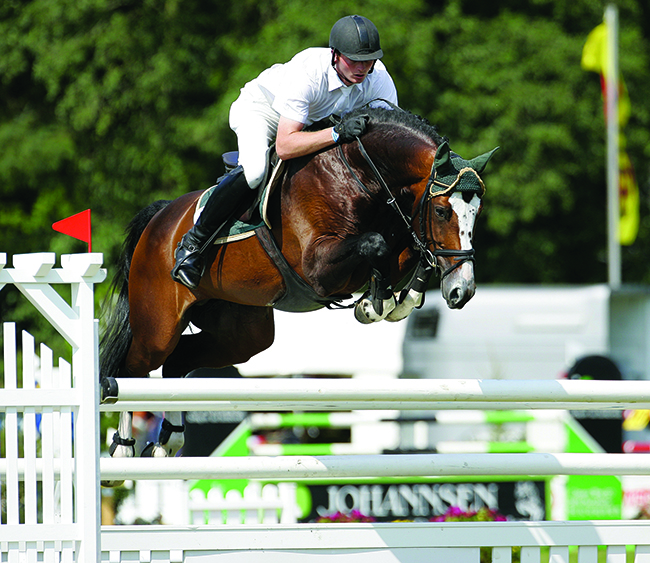
This article was first published in July 2005.



This was a fun article! The rider from KSA is a joy to watch.
Why question the scope of a tight and tidy horse?